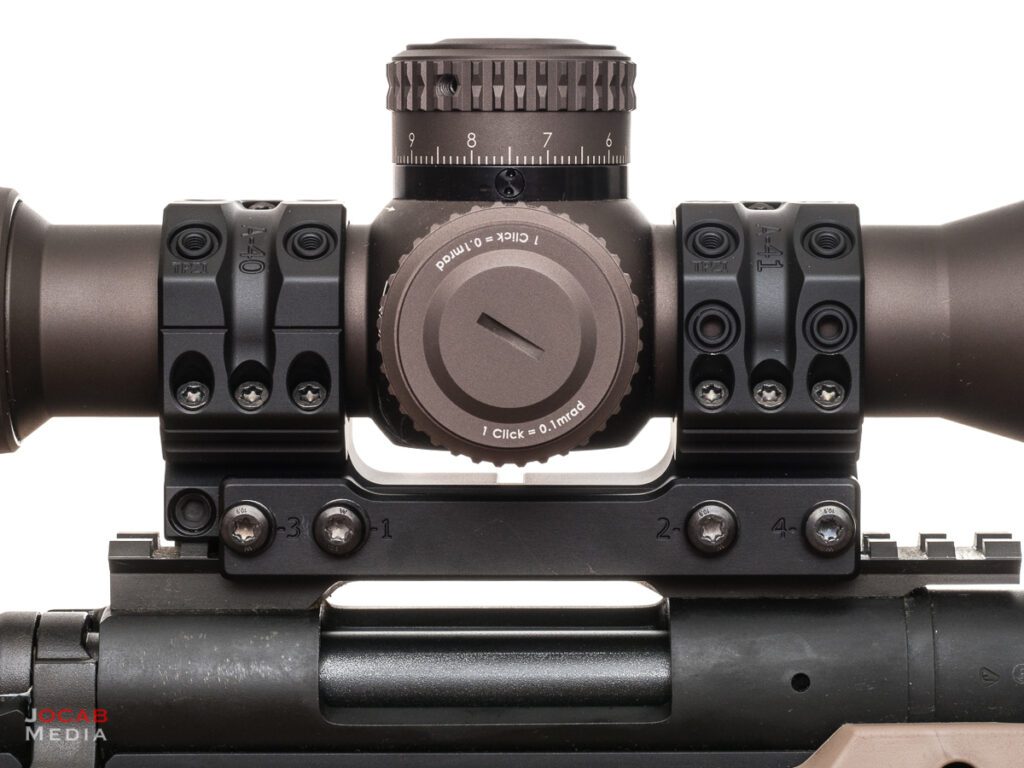Selecting the ideal gun scope mount is a pivotal decision that directly influences the accuracy and effectiveness of your firearm. In this comprehensive guide, we will explore the key considerations and factors that go into choosing the right gun scope mount for your specific needs. Whether you’re an experienced marksman or a novice enthusiast, understanding the nuances of these essential components will significantly enhance your shooting experience.
Table of Contents
Types of Gun Scope Mounts:
Gun scope mounts are crucial components for attaching scopes or optics to firearms, enhancing accuracy and targeting capabilities. Various types of gun scope mounts exist, each designed to suit specific preferences, firearm types, and shooting styles. Here are some common types:
1. Picatinny Rail Mounts:
– Description: The Picatinny rail, also known as a MIL-STD-1913 rail, features a series of evenly spaced slots. Picatinny mounts have cross-slots that accommodate various accessories, making them versatile.
– Advantages: Widely used and standardized, allowing easy interchangeability of optics and accessories. Offers secure attachment.
2. Weaver Rail Mounts:
– Description: Similar to the Picatinny rail but with a slightly different slot width, Weaver mounts are common for hunting rifles and some handguns.
– Advantages: Compatibility with both Weaver and Picatinny accessories, though Picatinny accessories might not fit perfectly on a Weaver rail.
3. Dovetail Mounts:
– Description: Dovetail mounts use a wedge-shaped groove for securing optics. It is commonly found on air rifles and some rimfire firearms.
– Advantages: Lightweight and simple design. Popular for certain types of rifles and handguns.
4. Scope Ring Mounts:
– Description: Scope rings consist of two rings that encircle the scope and are then attached to the firearm’s base or rail.
– Advantages: Simple and traditional design. Available in various heights and materials to accommodate different scopes.
5. Quick-Release Mounts:
– Description: These mounts allow rapid attachment and removal of scopes without the need for tools.
– Advantages: Convenient for users who frequently switch optics. It provides a quick way to change configurations without losing zero.
6. Cantilever Mounts:
– Description: Cantilever mounts extend forward, providing extra eye relief and mounting space. They are commonly used with AR-15s and similar platforms.
– Advantages: Enhanced flexibility in scope placement, especially beneficial for rifles with short rails.
7. Offset Mounts:
– Description: These mounts position the optic to the side of the firearm, allowing the use of iron sights simultaneously.
– Advantages: Useful for quick transitions between magnified optics and close-quarters shooting with iron sights.
8. One-Piece Mounts:
– Description: One-piece mounts integrate the base and ring into a single unit, providing a solid and continuous platform for the scope.
– Advantages: Minimizes the number of connections, potentially improving stability and alignment.
When choosing a gun scope mount, considerations should include the firearm type, intended use, and personal preferences. Additionally, ensuring compatibility with the specific scope and firearm is crucial for optimal performance and accuracy.
Considerations for Choosing Gun Scope Mounts
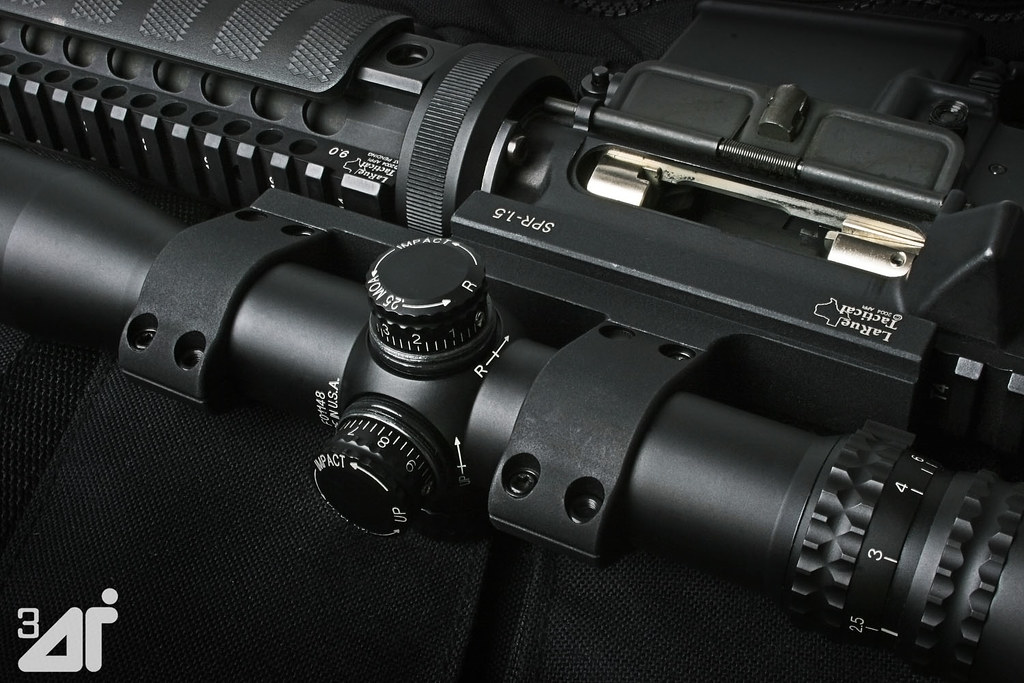
When selecting a gun scope mount, several key considerations should be taken into account to ensure compatibility, functionality, and optimal performance. Here are important factors to consider:
1. Firearm Type:
– Different firearms have unique mounting systems. Ensure that the mount is compatible with your specific firearm, considering factors such as the type of rifle (bolt-action, AR-15, etc.) and its intended use (hunting, target shooting, etc.).
2. Scope Tube Diameter:
– Scopes come in various tube diameters (usually 1 inch or 30mm). Choose a mount that matches the diameter of your scope tube to ensure a secure and snug fit.
3. Mounting System (Picatinny, Weaver, Dovetail, etc.):
– The type of mounting system on your firearm determines the compatibility of the mount. Ensure that the mount is designed for the specific rail system on your gun, whether it’s a Picatinny, Weaver, or dovetail rail.
4. Scope Height and Eye Relief:
– Consider the height of the mount in relation to the rifle’s bore axis and the scope’s design. The mount should provide adequate clearance to ensure proper eye relief and a comfortable shooting position.
5. Material and Durability:
– Mounts are commonly made of materials like aluminum, steel, or polymer. Consider the durability and weight of the mount, keeping in mind the intended use of the firearm. Steel mounts are often more robust but may add more weight.
6. Scope Mounting System (Ring Mounts, One-Piece, Cantilever, etc.):
– Choose a mounting system that suits your preferences and the firearm’s configuration. One-piece mounts offer simplicity and potential stability, while cantilever mounts are ideal for extending eye relief on platforms like AR-15s.
7. Quick-Release or Fixed:
– Decide whether you need a quick-release mount for easy removal and attachment of the scope without tools. Quick-release mounts are beneficial for those who frequently switch optics or need to adapt to changing shooting conditions.
8. Offset and Cantilever:
– For AR-15 or similar platforms, consider whether an offset or cantilever mount is needed. These designs can provide additional space for mounting optics and accessories while maintaining proper eye relief.
9. Budget:
– Set a budget for the scope mount, keeping in mind that high-quality mounts often come with a higher price tag. Invest in a mount that meets your requirements and provides a secure foundation for your optic.
10. Brand Reputation and Reviews:
– Research and consider the reputation of the mount’s manufacturer. Reading reviews from other firearm enthusiasts can provide insights into the reliability and performance of a specific mount.
11. Compatibility with Iron Sights:
– If you plan to use iron sights in addition to your optic, consider an offset or mount that allows co-witnessing to ensure proper alignment between the iron sights and the optic.
Precision Shooting Needs:
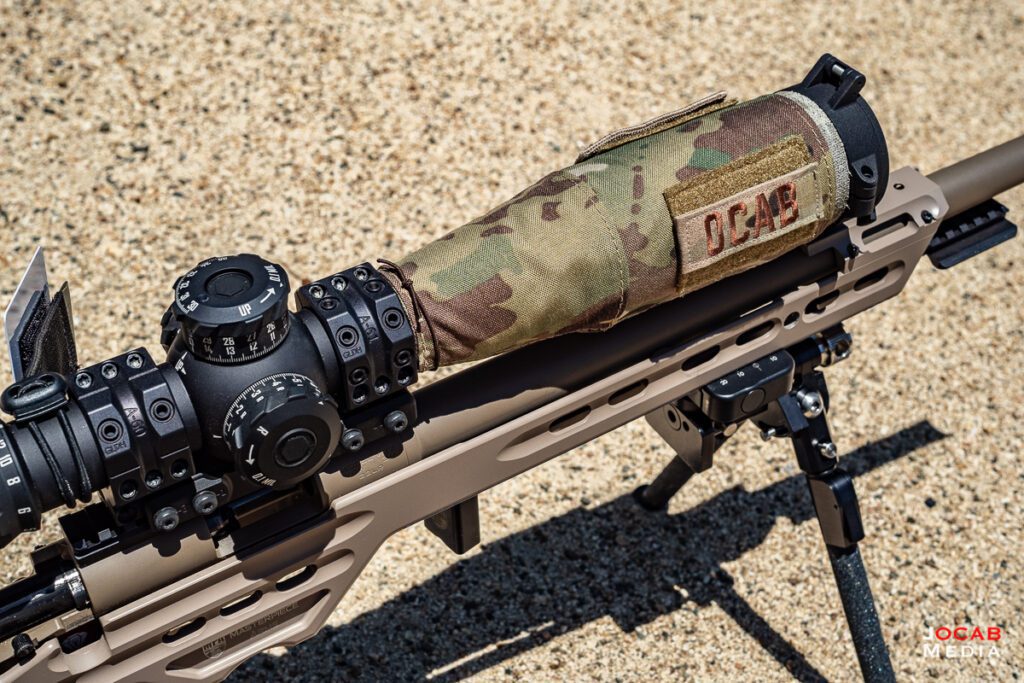
Precision shooting requires a combination of skill, equipment, and knowledge to consistently achieve accurate and tight groupings. Whether you’re engaged in long-range shooting, competitive shooting, or tactical applications, certain elements are crucial to meet the demands of precision shooting. Here are some key aspects that precision shooters need to consider:
1. High-Quality Rifle:
– Precision shooting often starts with a well-built and accurate rifle. The firearm should have a reliable action, a precision barrel, and a stable stock. The caliber and cartridge choice depends on the specific shooting application, but consistency and accuracy are paramount.
2. Precision Optics:
– High-quality optics are essential for precision shooting. This includes a precise rifle scope with the right magnification, clarity, and features like adjustable turrets and reticles. Optics play a critical role in target acquisition and shot placement, especially at extended distances.
3. Consistent Ammunition:
– Precision shooters often handload their ammunition to control and fine-tune the components for optimal performance. Consistency in bullet weight, powder charge, and primer choice can significantly impact accuracy. Match-grade ammunition or carefully crafted handloads are common in precision shooting.
4. Stable Shooting Platform:
– A stable shooting platform is vital for accuracy. This involves using a quality bipod, tripod, or shooting rest to minimize movement and support the rifle during the shot. A stable shooting position, whether prone, kneeling, or from a bench, is crucial for precision shooting.
5. Precision Shooting Fundamentals:
– Precision shooters must master the fundamentals of marksmanship, including proper trigger control, breathing techniques, and consistent sight picture. Small errors in these fundamentals can have a significant impact on shot placement, especially at longer distances.
6. Wind Reading Skills:
– Wind is one of the most challenging factors in precision shooting. The ability to read and estimate wind speed and direction is crucial for making accurate adjustments to compensate for bullet drift. Skilled precision shooters often use wind flags and environmental cues to gauge wind conditions.
7. Ballistic Knowledge:
– Understanding the ballistic characteristics of the chosen ammunition and rifle setup is essential. This includes knowledge of bullet drop, drift, and other factors that affect the trajectory of the projectile. Ballistic software or calculators can assist in making accurate adjustments.
8. Training and Practice:
– Precision shooting is a skill that improves with regular training and practice. This includes live-fire exercises, dry-fire practice and scenario-based training. Developing muscle memory and honing shooting techniques contribute to consistent precision.
9. Data Recording and Analysis:
– Precision shooters often keep detailed records of their shots, including data on weather conditions, shot distances, and performance. This data is valuable for making informed adjustments and improvements over time.
10. Range Estimation Skills:
– Accurate range estimation is crucial for precise shot placement. Precision shooters should develop the ability to estimate distances effectively, whether using a laser rangefinder or relying on visual cues.
11. Communication and Spotting:
– In team-based precision shooting, effective communication between the shooter and spotter is essential. A skilled spotter can provide valuable information on shot placement, environmental conditions, and adjustments needed for subsequent shots.
12. Patience and Discipline:
– Precision shooting requires patience and discipline. Waiting for the right conditions, executing each shot with precision, and maintaining focus over extended periods are key attributes of successful precision shooters.
Installation Techniques:
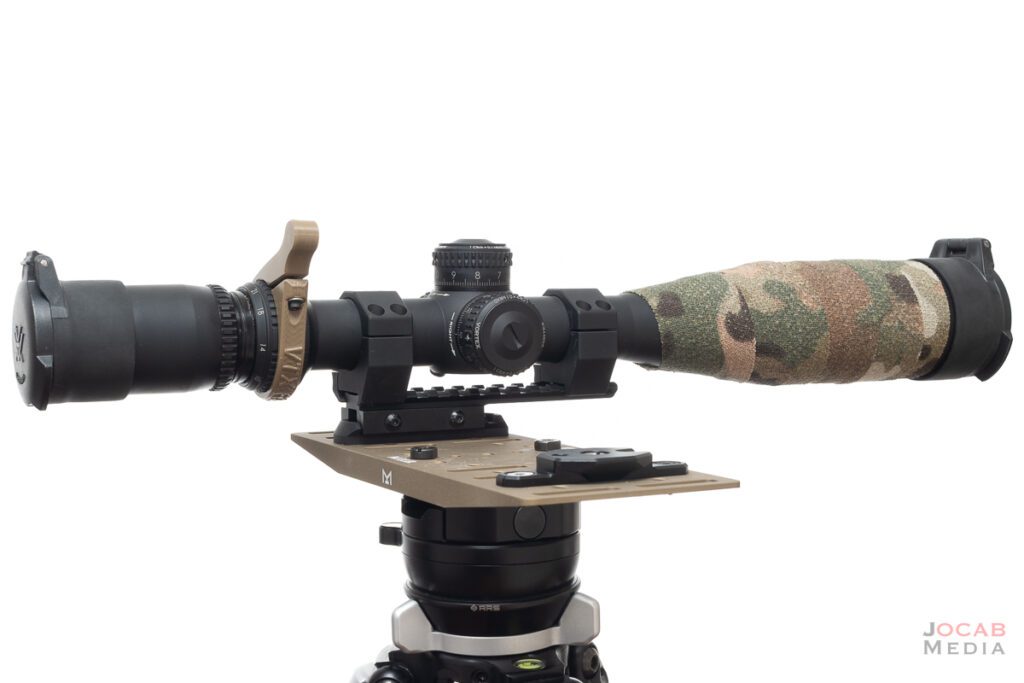
Precision shooting involves not only having the right equipment but also ensuring that it is installed and set up correctly. Proper installation techniques contribute to the overall accuracy and consistency of a precision shooting system. Here are key aspects of installation techniques for precision shooting:
1. Scope Mounting:
– Alignment and Leveling: Ensure that the scope is mounted level with the rifle’s bore axis. Misalignment can introduce errors in elevation and windage adjustments.
– Torque Settings: Use a torque wrench to tighten scope mount screws to the manufacturer’s recommended specifications. This helps maintain consistency and prevents over-tightening, which can damage components.
2. Bore Sighting:
– Initial Alignment: Bore sighting is the process of aligning the scope with the rifle’s bore. While it won’t zero the rifle, it gets the scope on paper for initial adjustments. Laser bore sighting tools can aid in this process.
3. Rifle Bedding:
– Stock Fit: Ensure that the rifle’s action fits securely into the stock. Proper bedding involves creating a precise and stable interface between the action and the stock, reducing any movement that could affect accuracy.
4. Trigger Adjustment:
– Consistent Break: Adjust the trigger to have a consistent and predictable break. A crisp and repeatable trigger pull is crucial for precision shooting.
5. Free-Floating Barrel:
– Barrel Clearance: Some precision rifles benefit from a free-floating barrel. Ensure that the barrel doesn’t contact the stock to eliminate any pressure points that might affect accuracy.
6. Muzzle Brake/Suppressor Installation:
– Proper Alignment: If using a muzzle brake or suppressor, ensure it is correctly aligned. Misalignment can affect bullet trajectory. Follow manufacturer instructions for installation.
7. Bi-Pod or Shooting Rest Setup:
– Stability: Set up the bi-pod or shooting rest on a stable surface. Ensure that the rifle is supported consistently to minimize movement during the shot.
8. Adjustable Cheek Rest and Buttstock:
– Eye Alignment: Ensure the shooter’s eye is properly aligned with the scope by adjusting the cheek rest. Also, adjust the length of the pull for a comfortable and stable shooting position.
9. Windage and Elevation Adjustment:
– Methodical Adjustments: When zeroing the scope, make deliberate and methodical adjustments. Follow a consistent process to eliminate human error and ensure precise adjustments.
10. Recording and Tracking:
– Data Log: Keep a detailed log of the installation process, including torque values, adjustments made, and any anomalies observed. This log can be valuable for troubleshooting and future reference.
11. Environmental Factors:
– Temperature and Humidity: Be aware of environmental factors that can affect the rifle and optics. Changes in temperature and humidity can impact zero, so it’s essential to recheck and adjust as needed.
12. Functional Checks:
– Safety and Function: Before heading to the range, perform safety and function checks. Ensure that all components are secure, and the rifle functions correctly.
13. Recoil Management:
– Consistent Recoil Pad: If applicable, ensure that the recoil pad is consistent in material and thickness. Consistent recoil management contributes to shot-to-shot consistency.
14. Team Communication (Spotter and Shooter):
– Clear Communication: In team-based precision shooting, clear communication between the spotter and shooter is crucial during the installation and adjustment process. This includes feedback on shot placement, adjustments, and environmental conditions.
Comparing Materials:
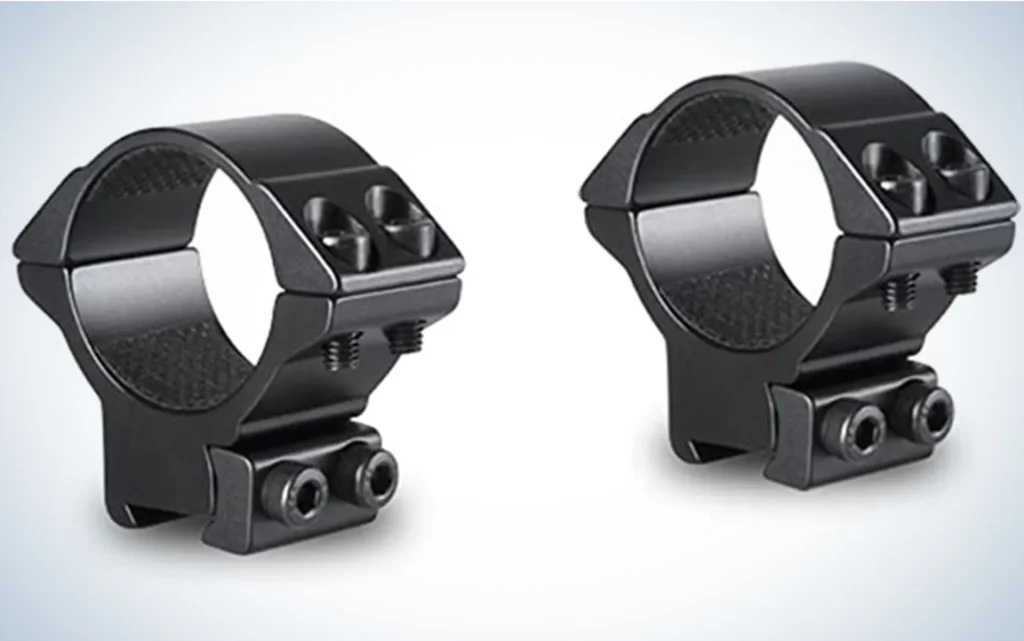
When it comes to precision shooting, the materials used in various components play a critical role in determining the overall performance, durability, and reliability of the firearm. Here’s a look at the key materials commonly used in precision shooting components and a comparison of their characteristics:
1. Barrel Material:
– Stainless Steel: Commonly used in precision rifle barrels due to its corrosion resistance and heat resistance. Stainless steel barrels are known for their durability and longevity, making them suitable for extended shooting sessions.
– Carbon Steel: Offers excellent accuracy and is often more affordable than stainless steel. Carbon steel barrels may require more maintenance to prevent corrosion.
2. Action Material:
– Steel: Most precision rifle actions are made of steel for its strength and rigidity. Steel actions provide a solid platform for consistent shot placement and can withstand the forces generated during firing.
– Aluminum: Some actions use aluminum components to reduce weight. While lighter, aluminum may not be as robust as steel. However, advancements in design and materials have led to durable aluminum actions.
3. Stock Material:
– Fiberglass/Composite: Popular for its strength-to-weight ratio. Fiberglass and composite stocks are resistant to changes in temperature and humidity, making them stable for precision shooting.
– Laminated Wood: Combines layers of wood bonded together. Laminated stocks are known for their aesthetic appeal and can provide stability similar to fiberglass, but they may be heavier.
– Aluminum Chassis: Some precision rifles use aluminum chassis systems for the stock. These chassis provide modularity, allowing for adjustable components and accessory attachments.
4. Scope Mount Material:
– Aluminum: Widely used for scope mounts due to its combination of strength and lightweight. Aluminum mounts are durable and resistant to corrosion.
– Steel: Steel mounts are robust and offer excellent stability. They are often preferred for heavy-recoiling rifles where durability is a primary concern.
5. Trigger Material:
– Steel: Common in precision triggers for its strength and durability. Steel triggers can provide a consistent and crisp break.
– Aluminum: Some triggers incorporate aluminum components to reduce weight. However, the primary engagement surfaces are often made of steel for durability.
6. Bolt Material:
– Steel: Standard material for bolts due to its strength and resistance to wear. Steel bolts are durable and provide reliable cycling.
– Titanium: In some high-end rifles, titanium bolts are used to reduce weight. Titanium is strong but may not be as wear-resistant as steel.
7. Muzzle Brake/Suppressor Material:
– Stainless Steel: Common for its corrosion resistance. Stainless steel muzzle brakes and suppressors are durable and withstand the high-temperature gases produced during firing.
– Titanium: Used in some muzzle devices to reduce weight. Titanium provides strength while being lighter than stainless steel.
8. Bi-Pod Material:
– Aluminum: Lightweight and corrosion-resistant, making it a popular choice for bipod construction. Aluminum bipods are easy to carry for precision shooters.
– Steel: Some bipods use steel components for added durability, especially in high-stress areas. Steel bipods may be heavier but offer robustness.
9. Rifle Bolt Knob Material:
– Aluminum: Often used for bolt knobs to reduce weight. Aluminum knobs can be knurled or textured for a better grip.
– Steel: Steel bolt knobs are heavier but provide additional mass at the rear of the bolt, potentially aiding in smooth cycling.
10. Magazine Material:
– Steel: Common for precision rifle magazines due to its durability and resistance to wear. Steel magazines are reliable and long-lasting.
– Polymer: Some precision rifles use polymer magazines to reduce weight. Modern polymer magazines are designed for durability and consistent feeding.
Adjustability and Customization:
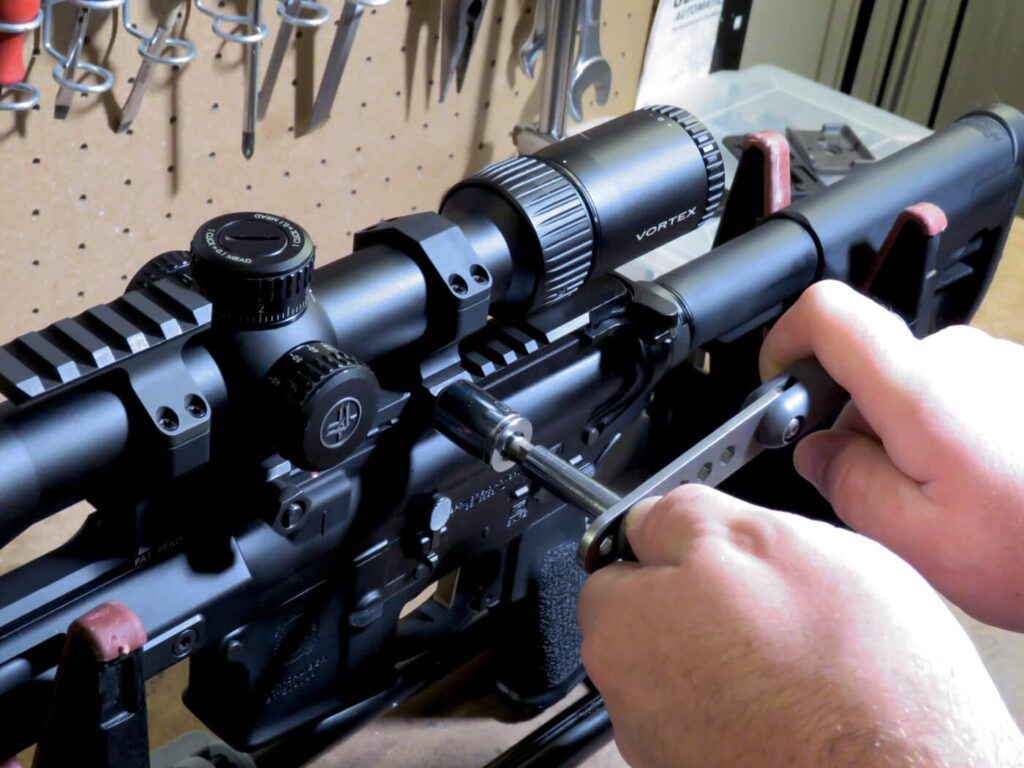
Adjustability and customization are crucial aspects of precision shooting, allowing shooters to tailor their firearms to specific preferences, body dimensions, and shooting conditions. Here’s a look at how different components can be adjusted and customized for precision shooting:
1. Stock Adjustability:
– Length of Pull (LOP): Adjustable LOP accommodates shooters of different sizes, ensuring a comfortable and proper fit.
– Cheek Rest Height: Adjustable cheek rests or risers allow for proper eye alignment with the scope, enhancing comfort and accuracy.
– Buttplate Adjustment: Some stocks allow for adjustments in the buttplate to optimize the rifle’s fit to the shooter.
2. Chassis Systems:
– Modular Design: Chassis systems offer modularity, allowing shooters to customize features such as handguards, pistol grips, and adjustable components.
– Accessory Mounting: Picatinny or M-Lok rails on chassis systems enable the attachment of accessories like bipods, lights, and lasers.
3. Scope Mounts:
– Cantilever and Forward Cant: Cantilever mounts provide forward positioning for scopes, improving eye relief and flexibility. Some mounts allow cant adjustments for specific shooting scenarios.
– Quick-Release Mechanisms: Quick-release mounts facilitate rapid removal and installation of optics, enabling shooters to switch between setups easily.
4. Triggers:
– Adjustable Trigger Pull: Precision triggers often have adjustable pull weights to meet individual preferences for light or heavier trigger breaks.
– Trigger Shoe Replacement: Some triggers allow for the replacement of the trigger shoe, providing a customized shape for better ergonomics.
5. Bipods:
– Leg Height Adjustment: Adjustable bipod legs accommodate varying shooting positions and terrain. Shooters can set the height for prone, sitting, or kneeling positions.
– Pan and Tilt Features: Swiveling bipod heads with pan and tilt capabilities enhance flexibility for tracking moving targets or adjusting for uneven ground.
6. Muzzle Devices:
– Muzzle Brake Tuning: Muzzle brakes may have adjustable features, allowing shooters to fine-tune the amount of recoil reduction and muzzle rise control.
– Suppressor Attachment: Some precision rifles are designed to accommodate suppressors, providing customization for shooters who prefer shooting with or without a suppressor.
7. Adjustable Gas Blocks:
– Gas Flow Regulation: Adjustable gas blocks enable shooters to optimize the rifle’s gas system for different loads or shooting conditions, enhancing reliability and recoil management.
8. Aftermarket Bolt Knobs:
– Larger or Custom Bolt Knobs: Shooters can customize the bolt knob to their preferences, choosing a larger or differently shaped knob for improved handling.
9. Custom Triggers:
– Match Grade Triggers: Upgrading to a match-grade trigger provides a crisp, consistent break, enhancing precision. Some triggers offer a wide range of adjustments for travel and overtravel.
10. Barrel Tuning:
– Threaded Muzzle for Accessories: Rifles with threaded muzzles allow for the attachment of accessories like suppressors or muzzle brakes, enhancing customization.
– *Interchangeable Barrels:* Some precision rifles allow for the easy swapping of barrels to accommodate different calibers or shooting scenarios.
11. Accessory Rails and Mounting Points:
– Forend Rails: Chassis systems or handguards with accessory rails provide mounting points for accessories like bipods, lights, lasers, or sling attachments.
12. Customizable Magazines:
– Extended Base Plates: Some precision shooters customize their magazines with extended base plates for easier handling and additional capacity.
13. Recoil Pads:
– Adjustable Recoil Pads: Some precision stocks come with adjustable recoil pads, allowing shooters to customize the length and angle to optimize recoil management.
14. Handguard Accessories:
– Picatinny or M-Lok Sections: Handguards with modular sections allow for the attachment of various accessories, such as barricade stops, handstops, or rail covers.
By incorporating these adjustable and customizable features, precision shooters can fine-tune their firearms to match their individual preferences, shooting styles, and specific requirements, ultimately enhancing their performance in various shooting scenarios.
Budget-Friendly Options:

Building a precision shooting setup on a budget requires careful consideration of cost-effective options without compromising essential features. Here’s a guide to budget-friendly options for various components used in precision shooting:
1. Budget-Friendly Rifles:
– Entry-Level Bolt-Action Rifles: Brands like Savage, Ruger, and Mossberg offer budget-friendly bolt-action rifles with acceptable accuracy for entry-level precision shooting.
– Affordable AR-15 Platforms: Some AR-15 platforms designed for accuracy on a budget can serve as a cost-effective option for precision shooting.
2. Budget Scopes:
– Fixed Magnification Scopes: Consider fixed magnification scopes, as they are often more affordable than variable magnification options. Brands like Vortex, Nikon, and Bushnell offer budget-friendly models.
– Entry-Level Tactical Scopes: Look for entry-level scopes designed for tactical or precision shooting, balancing performance and cost.
3. Budget-Friendly Mounts:
– Basic Weaver or Picatinny Rings: Simple, durable rings without additional features can be budget-friendly. Brands like UTG and Monstrum Tactical offer affordable options.
– Budget Cantilever Mounts: Some entry-level cantilever mounts provide decent quality at a lower cost, accommodating budget-friendly scopes.
4. Affordable Stocks and Chassis:
– Polymer or Entry-Level Composite Stocks: Basic synthetic stocks or entry-level composite stocks can be affordable while still providing a stable platform.
– Budget Chassis Systems: Some aluminum chassis systems are designed to be budget-friendly, providing modularity and stability without the high cost.
5. Economical Triggers:
– Budget Drop-In Triggers: Affordable drop-in trigger kits from brands like Timney, CMC, or Velocity Triggers can provide improved performance without breaking the bank.
– Adjustable Budget Triggers: Some budget-friendly triggers offer basic adjustability, allowing shooters to customize the trigger pull weight.
6. Budget Bipods and Shooting Rests:
– Basic Folding Bipods: Entry-level bipods from brands like CVLIFE or UTG can provide stable shooting support without a significant cost.
– Affordable Shooting Bags: Basic shooting bags or DIY alternatives can serve as budget-friendly options for rear support.
7. Inexpensive Muzzle Devices:
– Basic Muzzle Brakes: Budget-friendly muzzle brakes from various manufacturers can help manage recoil without a high price tag.
– Affordable Threaded Barrel Caps: Some rifles come with threaded muzzles, allowing users to add a simple thread protector or muzzle cap without additional expense.
8. Cost-Effective Ammo:
– Bulk Match Ammo: Look for bulk packs of match-grade ammunition, which can offer good accuracy at a more affordable price per round.
– Reloaded Ammunition: Some budget-friendly options include reloaded or remanufactured ammunition, but it’s crucial to source from reputable manufacturers.
9. Affordable Handguards:
– Basic Free-Float Handguards: Entry-level free-float handguards or drop-in systems can be affordable and provide a stable platform for accessories.
– Polymer Handguards: Some budget rifles come with polymer handguards that, while not as modular, can be a cost-effective option.
10. Economical Accessories:
– Budget-Friendly Slings: Basic slings from reputable brands like Magpul or Condor can provide sufficient support without a high cost.
– DIY Cheek Rests: Crafty shooters can create budget-friendly cheek rests using materials like foam and fabric.
Gun Solvent Trap and Scope Mounts
Enhancing Firearm Maintenance: Leveraging the stability of gun scope mounts in tandem with solvent traps can provide firearm owners with a strategic approach to maintaining their weapons. By utilizing the stability offered by the mount during the cleaning process, enthusiasts may experience improved accessibility for thorough maintenance. However, it is crucial to emphasize responsible firearm ownership, legal compliance, and adherence to local regulations when considering such modifications. Ensuring proper installation and understanding the legal landscape surrounding firearm accessories is paramount to a safe and effective firearm maintenance routine. Always prioritize safety and legal compliance in the pursuit of optimizing your firearm’s performance.

